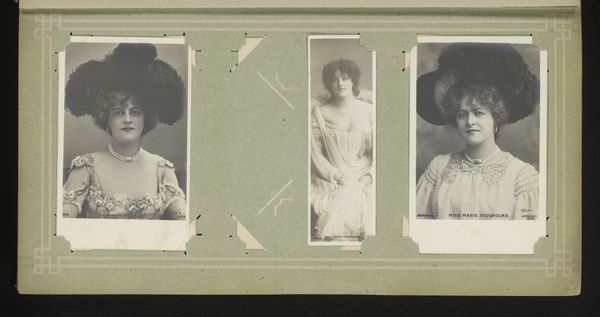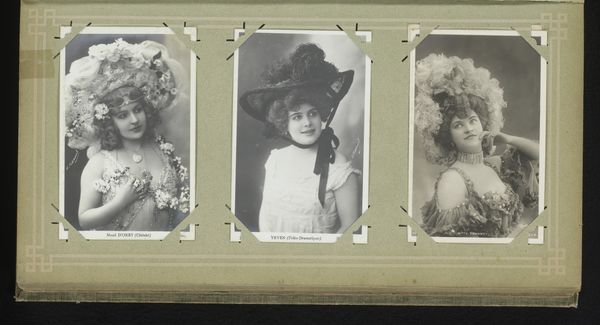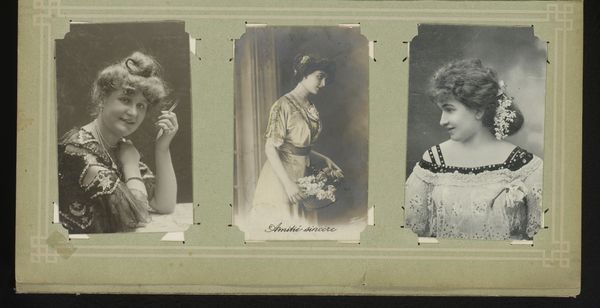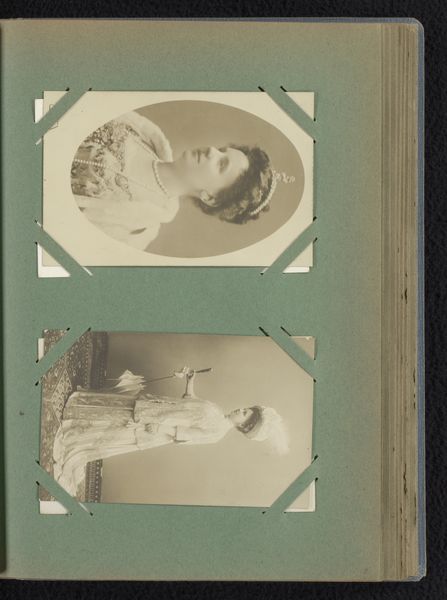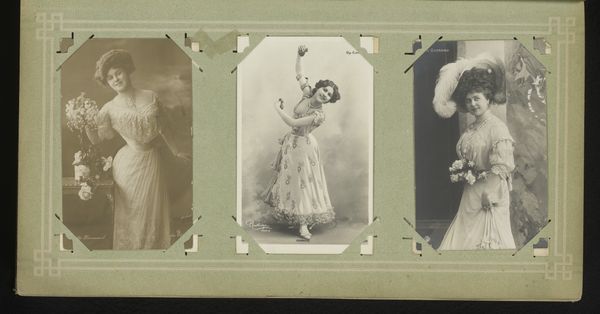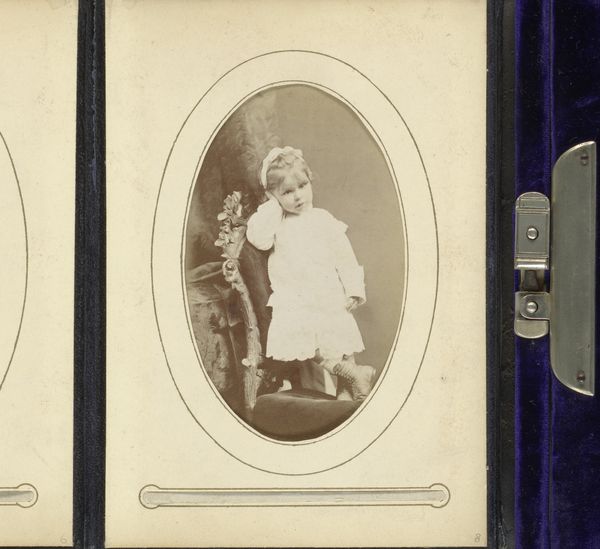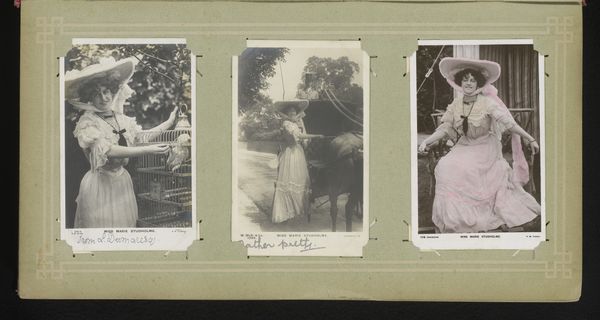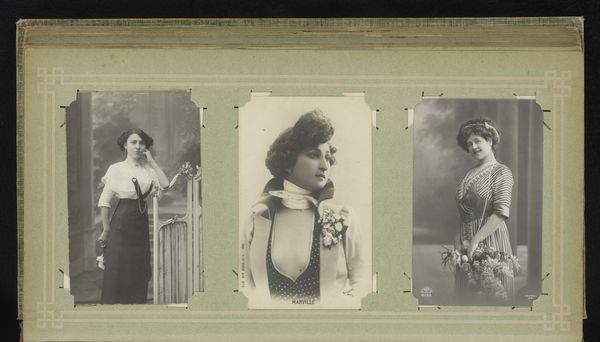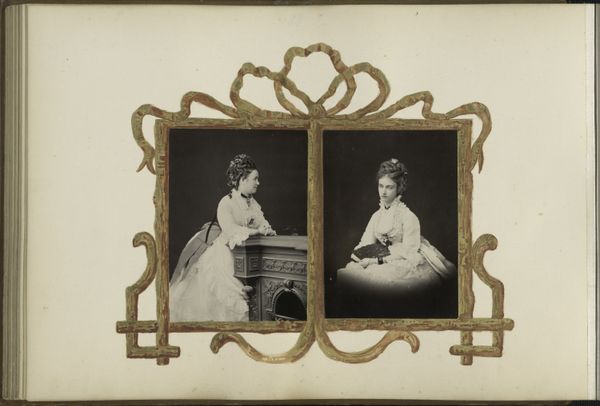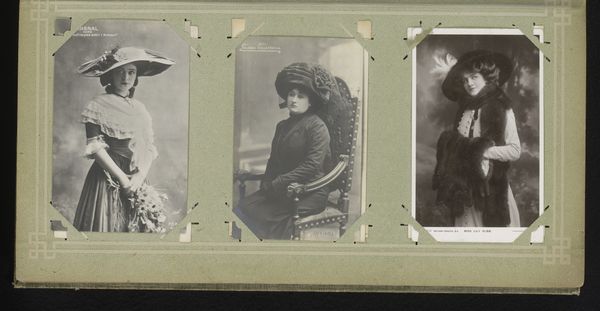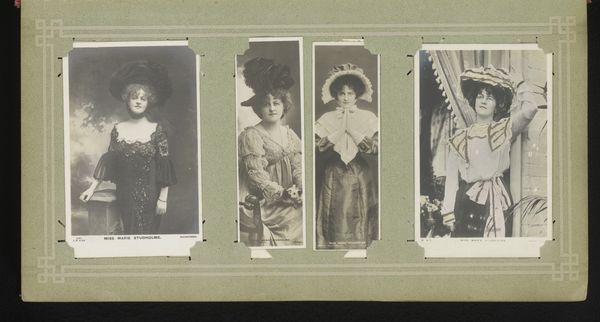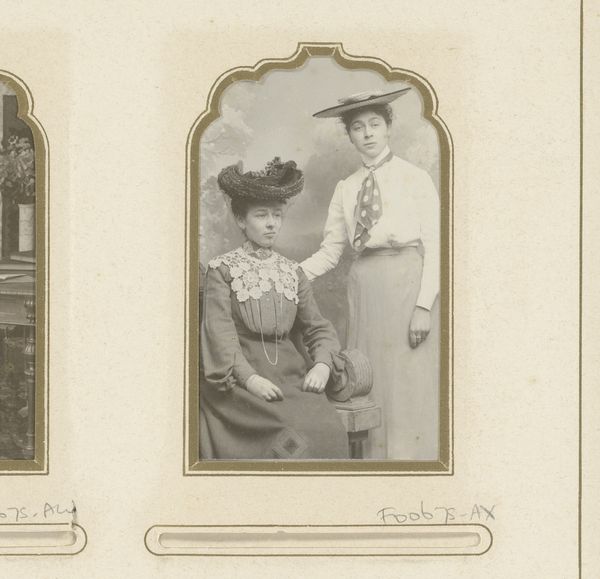
print, photography
#
portrait
#
art-nouveau
# print
#
photography
#
historical fashion
Dimensions: height 196 mm, width 368 mm
Copyright: Rijks Museum: Open Domain
Curator: This striking photographic print, attributed to Ch. Reutlinger, offers us twin portraits of Gilda Darthy and Gaby Deslys, likely captured sometime between 1900 and 1930. Editor: They look incredibly theatrical! The fluffy hats, the lace, the slightly faded quality of the photography…it all speaks of a particular kind of opulent, perhaps fleeting, beauty. Curator: Absolutely. Reutlinger was a very well-known portrait photographer, capturing images of many actresses, dancers and singers performing on the Parisian stage. So, what we see is partially determined by their line of labor. The subjects chose their presentation according to social trends in fashion. They were aware of their value and how to present themself. Editor: Which is interesting, given the materiality of photography. We think of it as capturing a “truth,” but the manipulation of light, pose, and now with things like editing or filters, suggests this is just one constructed view, carefully crafted. Do you see an tension in that regard? Curator: Indeed. What's intriguing to me is how the very materiality of this image—the print itself—points to larger economic and social systems. It gives material form to certain ideological constructions related to fashion and status, allowing for them to be disseminated, circulated, and consumed. Consider the mass production, the dark room practices… the photographic paper itself... the industrialization process has allowed their image to live beyond them, reproduced and disseminated broadly as material culture, in prints, journals and even, postcards. It really gives one a material view of art as accessible culture. Editor: That’s true; it wasn’t just an artistic object. I wonder how the societal position shaped the understanding and appreciation of feminine beauty in this epoch. Looking back, what we view and accept now as iconic, may have just as much impact from the society as from those in front of the lens. I imagine the viewer in their time could find just as much excitement when holding one of those photos. Curator: Precisely! So, next time you see an image, any image, take a moment to consider not just what's depicted, but also the material forces that have brought it into being. Editor: And to recognize, even within seemingly objective records like photographs, the layers of constructed meaning and historical context.
Comments
No comments
Be the first to comment and join the conversation on the ultimate creative platform.
